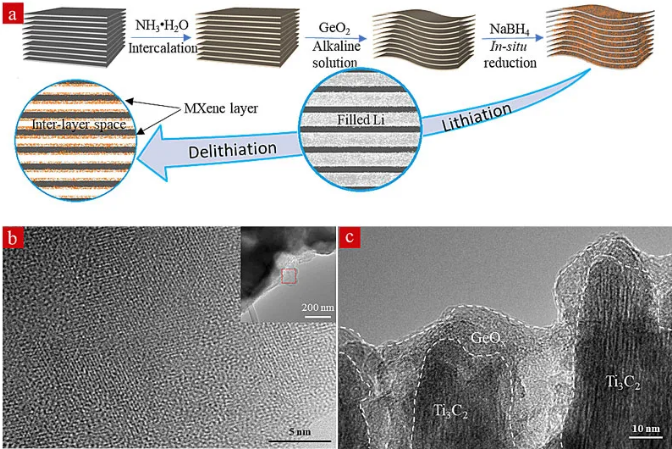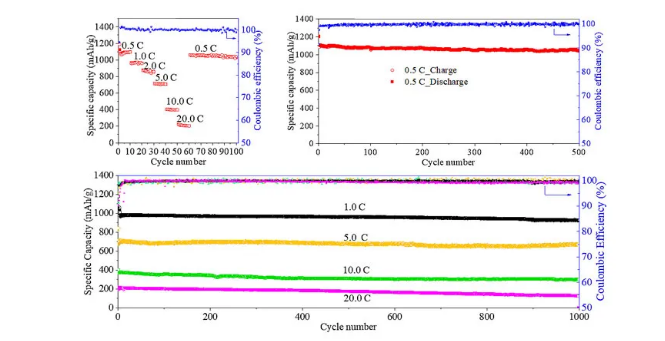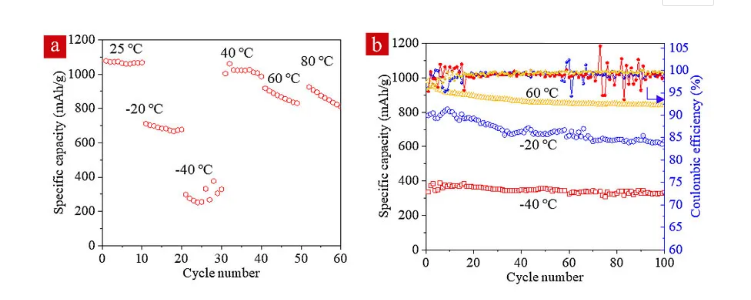
hotline:
17715390137
Tel/Wechat:
18101240246 (Technology)
0512-68565571
Email:mxenes@163.com (Sales Engineer)bkxc.bonnie@gmail.com
Scan the code to follow or search the official account on WeChat:
2D Materials Fronrier After paying attention,
click on the lower right corner to contact us,
Enter enterprise WeChat.
Professional Services Online

In recent years, with the rapid development of electric vehicles and mobile electronic equipment, the performance of lithium-ion batteries has become an important factor affecting its application. How to improve the energy density and rapid charge-discharge performance of lithium-ion batteries has gradually become the focus of research in the field of lithium-ion batteries. Traditional graphite electrodes cannot meet the development requirements of high-performance lithium-ion batteries due to limitations in energy density and charge-discharge rate. Compared with traditional graphite electrodes, emerging anode materials with higher specific capacity such as silicon, germanium and tin are expected to become important anode materials for next-generation lithium-ion batteries.
Silicon anodes have extremely high specific capacities and become the primary choice for the anode materials of next-generation lithium-ion batteries. But its low conductivity and large volume change have become important factors hindering its application. Compared to silicon, metal germanium has a higher specific capacity (1600 mAh/g, Li4.4Ge), good electrical conductivity, and excellent fast charge and discharge performance. However, its volume change of up to 300% during charging and discharging will result in poor cycle performance, affecting its practical application as a negative electrode material. The Junjie Niu research group of the University of Wisconsin-Milwaukee (UW-Milwaukee) is mainly engaged in the research and development of new lithium-ion batteries. In order to improve the stability of the anode material during the rapid charge and discharge process, improve the lithium ion transmission rate, and improve the conductivity, the researchers of this research group chose the new two-dimensional material MXene as the supporting material, and the metal oxide GeOx as the active material, using wet A new anode material was successfully prepared by chemical method. The special layered structure of the MXene loading material can provide sufficient space capacity for the volume change of the active material during the charging and discharging process to maintain the stability of the structure. The excellent conductivity of MXene is conducive to the improvement of the charge and discharge rate of electrode materials. At the same time, the presence of functional groups on the surface of MXene is conducive to the uniform adhesion and formation of amorphous GeOx during the preparation process (Figure 1).

Figure 1. Material preparation process and TEM characterization.
The resulting new negative electrode material with a special three-dimensional structure can maintain a specific capacity of 1048.1 mAh/g after 500 cycles at a 0.5C rate. After 1000 cycles at 1.0 rate, the specific capacity remains at 929.6 mAh/g, and the capacity loss is less than 0.02%/cycle. At the same time, charge and discharge up to 20C can be achieved (Figure 2). In the temperature range of -40 to 60 ℃ showed a high specific capacity and stable cycle performance (Figure 3). The new negative electrode material is expected to be used in electric vehicles, mobile electronic devices and electronic devices used in extreme temperature environments.

Figure 2. Cycle performance as a negative electrode material for lithium-ion batteries at 0.5C to 20C.

Figure 3. Cycle performance from -40°C to 80°C.
This result was recently published on ACS Nano. The first author of the article is Mingwei Shang, a PhD student of UW-Milwaukee, and the corresponding author is Junjie Niu.
Literature link: DOI: 10.1021/acsnano.0c00556
This information originates from the Internet for academic exchange only. If there is any infringement, please contact us to delete immediately

| Reminder: Beijing Beike New Material Technology Co., Ltd. supplies products only for scientific research, not for humans |
| All rights reserved © 2019 beijing beike new material Technology Co., Ltd 京ICP备16054715-2号 |